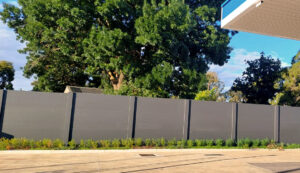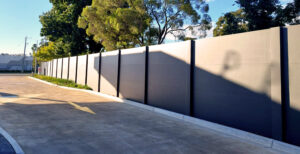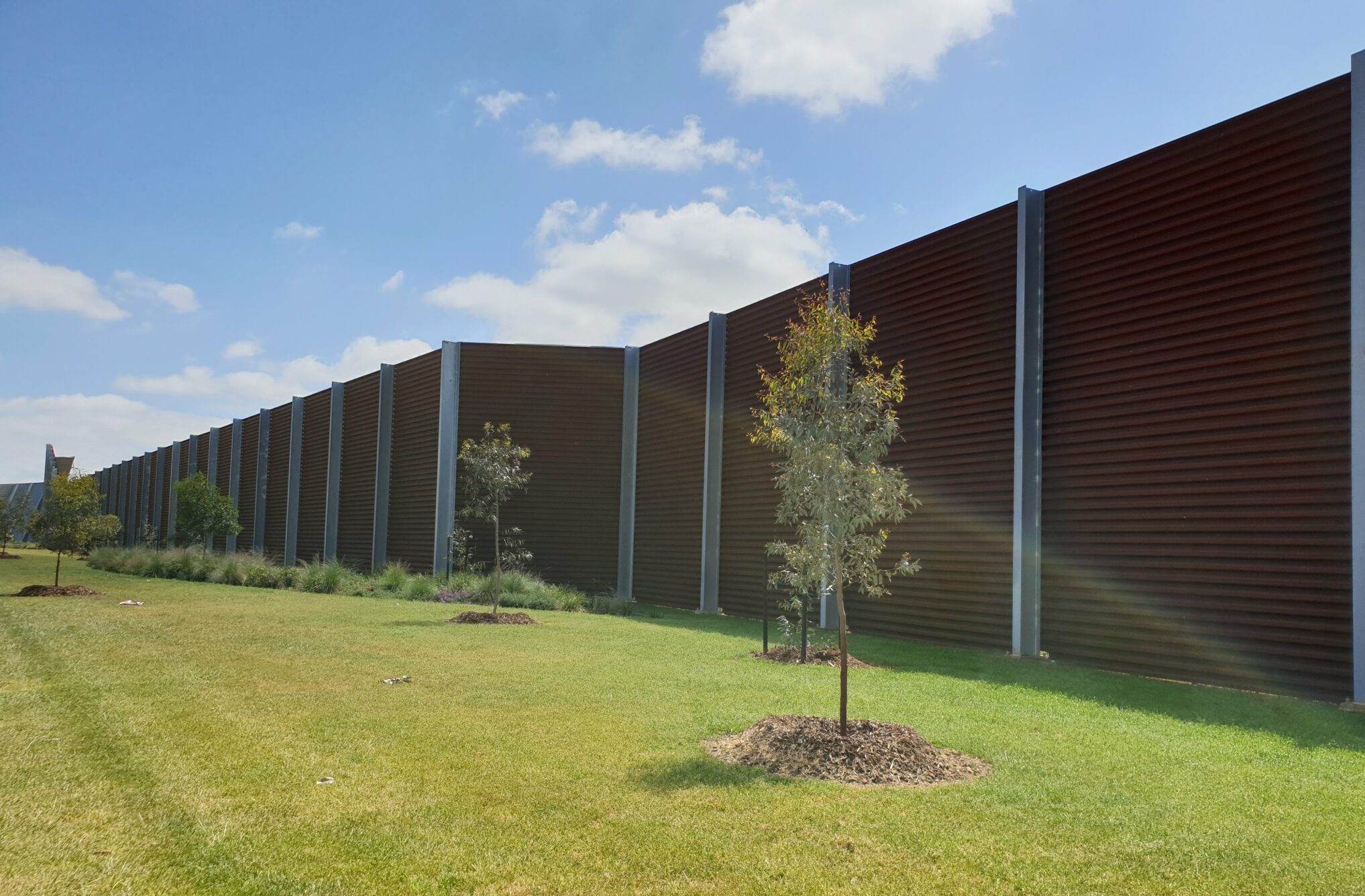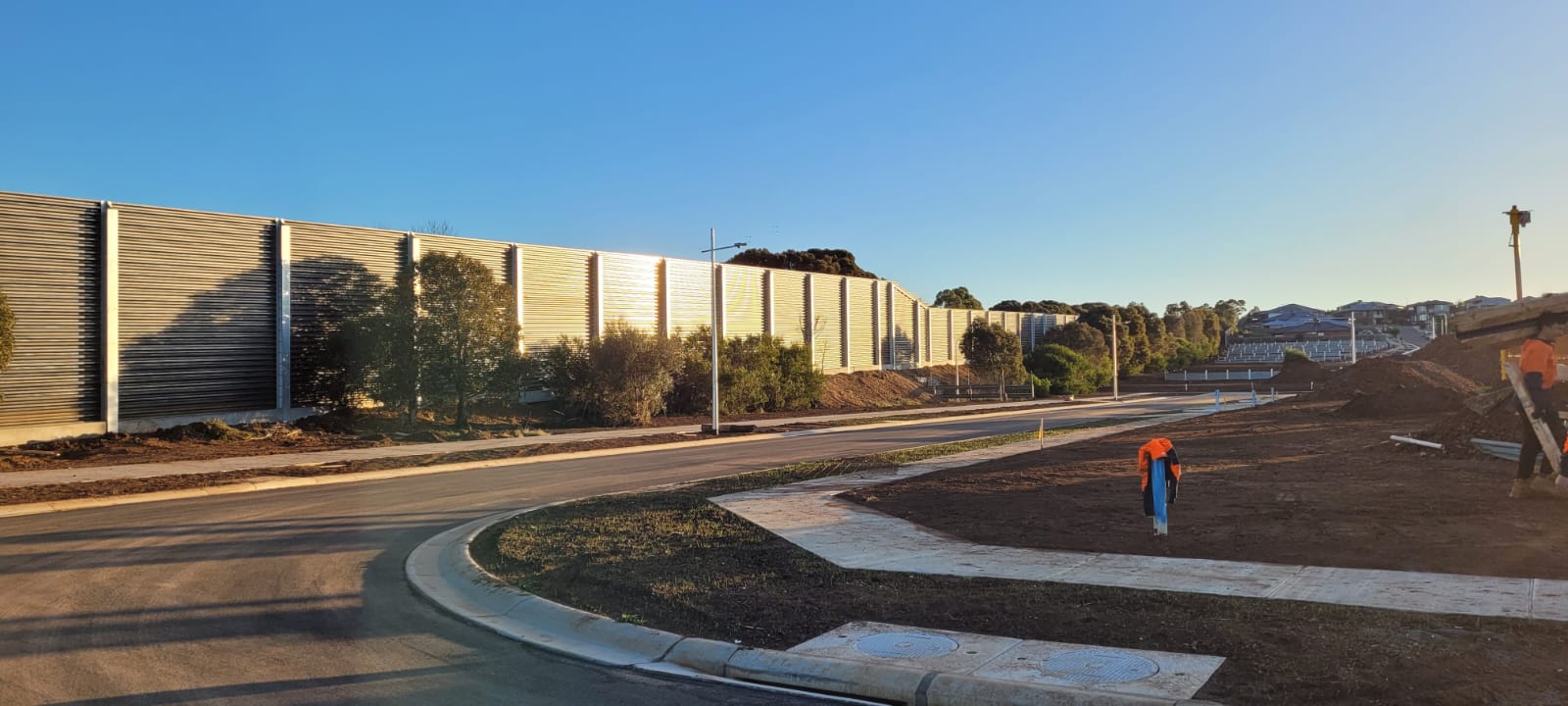Excessive noise is more than a nuisance. It can impact health, cause tension between neighbours and attract the wrong kind of attention from local councils. In a residential setting, it interrupts daily life. In commercial environments, it interferes with customers and staff. For industrial projects, it can breach compliance standards and halt operations.
So when developments sit near highways, rail lines, industrial zones or other noisy infrastructure, noise mitigation has to be baked into the planning process. That’s where acoustic wall solutions come in.
But not all solutions are created equal.
Wallmark’s Acoustic Walls Are Designed for the Real World
Wallmark has spent years engineering acoustic fencing and noise wall systems that do more than just meet the minimum requirements. Their modular designs are easy to install, visually customisable and built to last in Australia’s harsh conditions.
Each wall system is crafted with long-term use in mind. These aren’t temporary fences for shielding construction noise. They are permanent structures that become part of the final built environment. Whether you’re screening noise from a highway or separating a residential block from a commercial precinct, Wallmark’s walls are made to perform over decades.
Take Urbanwall for example. This is one of Wallmark’s most popular modular systems, chosen for its clean finish and durability. It works beautifully along roads, around car parks or between mixed-use developments where both privacy and peace are in high demand. Then there’s Evowall, designed for higher acoustic performance where noise pressure is more intense.

Introducing Lightweight Noise Walls
For some projects, traditional wall materials are too heavy or too labour-intensive to install efficiently. That’s where Wallmark’s lightweight noise wall range enters the picture.
These systems offer the same acoustic performance benefits but are made with high-strength, lighter-weight panels. They’re faster to install, easier to transport and ideal for sites with tight access or limited structural support capacity.
Two standout options are AcoustX and ZorbX.
AcoustX is the standard panel option. It offers reliable noise reflection and a clean, simple finish that blends into commercial and urban environments. It’s a great pick for office complexes, retail zones and infrastructure corridors where space is tight and flexibility matters.
ZorbX takes it a step further. This panel offers premium noise absorption and is built for spaces that demand serious sound control. One side reflects noise. The other absorbs it. And it comes ready for paint or pre-painted, which makes visual integration easy.
Both systems are built to comply with noise reduction standards and are tough enough to handle Australian weather. That means long-term performance without a high-maintenance headache.
Where These Walls Make the Biggest Impact
Modern acoustic wall solutions are used across a variety of sectors. In residential areas, they are installed along transport corridors to reduce the impact of traffic noise on homes and outdoor living spaces. In commercial zones, they help maintain a quiet environment for shoppers, diners or office workers. In industrial and logistics hubs, acoustic barriers protect neighbouring communities from machinery and vehicle noise.
Public infrastructure projects also rely heavily on noise walls. Roads, rail lines and utility installations often require sound mitigation as part of their environmental management plans.
Across all these sectors, the goal is the same. Maintain function while protecting people from excessive noise.

Compliance and Environmental Considerations
In Australia, acoustic walls used in development must meet strict guidelines. These cover both structural integrity and sound reduction performance. Noise criteria vary between local councils and states, but all require projects to demonstrate how environmental noise is being managed.
A certified acoustic consultant is typically engaged during planning to model expected noise impacts and recommend solutions. Once walls are installed, performance is often verified through post-construction testing.
Choosing a wall system that meets these requirements upfront saves time and avoids costly retrofits later on.
Long-Term Value and Aesthetic Integration
Beyond sound performance, modern acoustic walls are expected to enhance the look of a site. Gone are the days of plain grey barriers. Panels now come in a range of textures, patterns and finishes that can be matched to branding, streetscapes or architectural styles.
These visual options are more than cosmetic. Walls that blend into their environment are less likely to attract complaints and more likely to be approved during planning.
Low-maintenance materials also ensure that walls retain their performance and appearance over time, reducing the need for regular upkeep or repainting.
Bringing Noise Reduction into Your Project Design
Noise is a design challenge that can’t be ignored. With modern acoustic wall systems, developers and project managers have more control over how sound is managed across their sites.
Whether it’s a lightweight panel solution for a city park or a high-performance modular barrier along a highway, today’s acoustic walls are smarter, quicker to install and more visually adaptable than ever before.
And while they’re often invisible in the final streetscape, their impact is anything but.









You must be logged in to post a comment.